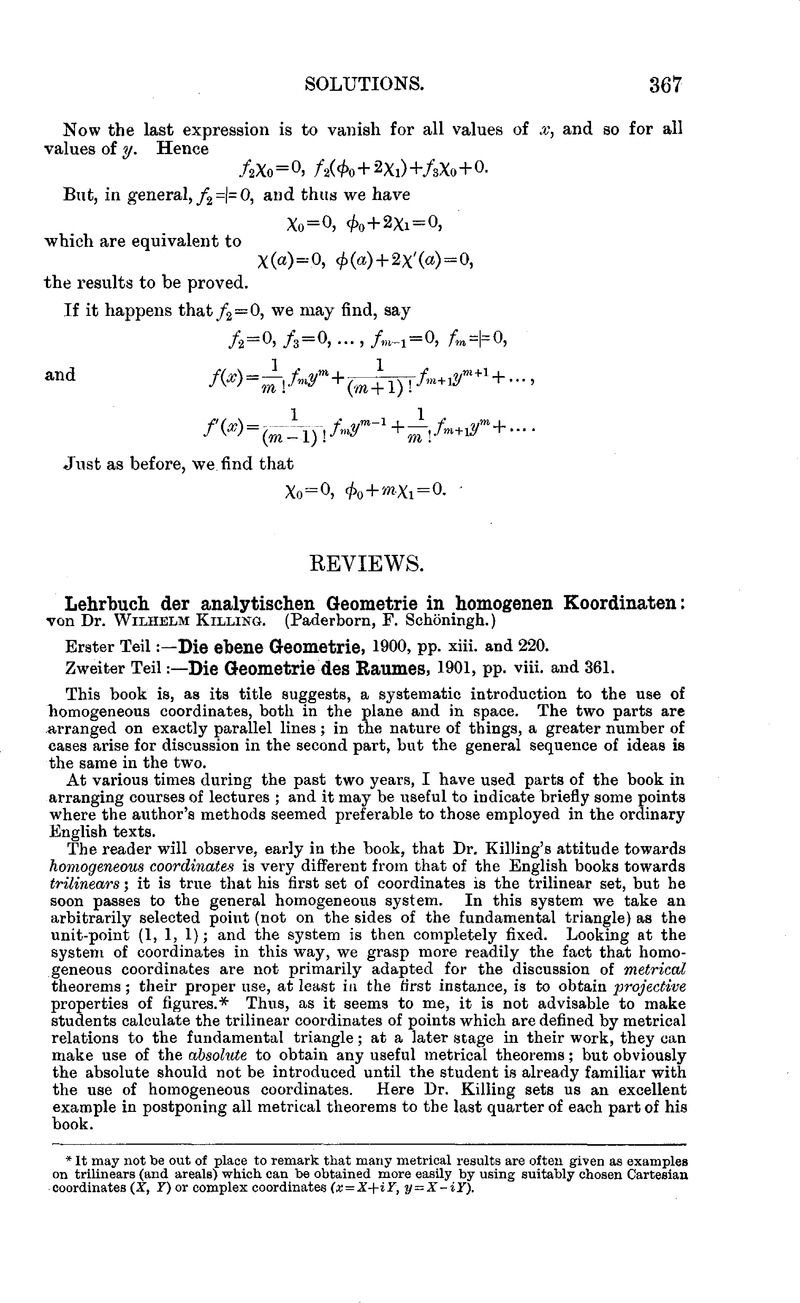No CrossRef data available.
Published online by Cambridge University Press: 03 November 2016

page note 337 * It may not be out of place to remark that many metrical results are often given as examples on trilinears (and areals) which can be obtained more easily by using suitably chosen Cartesian coordinates (X, Y) or complex coordinates (x=X+iY, y=X-iY).
page note 338 * I must explicitly exclude Miss C. A. Scott’s excellent work from this and other criticisms.
page note 338 † It may be worth while to call attention to the advantage of graphing conies from line-equations as well as from point equations. Thus, if a typical line (in Cartesians) is ux+vy+ 1 = 0 the conic whose line-equation is v3+aw2+26u+c = 0, may be graphed by writing it in the form
![]()
The intercepts ![]() on the coordinate axes can then be plotted by calculating
on the coordinate axes can then be plotted by calculating ![]() for a succession of values of
for a succession of values of ![]() . Thus a number of lines are drawn, which give a fairly good graph of the conic. Rather more care is necessary than when working from a point-equation; but graphs of this kind enable ordinary students to grasp more clearly the fact that a line-equation is just as fundamental as a point-equation.
. Thus a number of lines are drawn, which give a fairly good graph of the conic. Rather more care is necessary than when working from a point-equation; but graphs of this kind enable ordinary students to grasp more clearly the fact that a line-equation is just as fundamental as a point-equation.
page note 338 ‡ This equation is easily obtained from the results given by Dr. Killing (though the equation is not given by him); as usual, λ1, λ2, λ3 are parameters of the confocals through the origin; P1, P2, P3 are the coordinates of the centre of the confocals, referred to this origin; the equation to a plane is taken to be ux+vy+wz+t=0.
In a paraboloidal system the term t 2 disappears and p1, p2, p3 are proportional to the directioncosines of the axis of the system.